Welcome to our blog on Innovations in Poultry Farming: Technology and Automation! Poultry farming has come a long way, and today, advancements in technology and Automation are revolutionizing the industry. Farmers are adopting cutting-edge solutions to optimize productivity, improve animal welfare, and enhance efficiency.
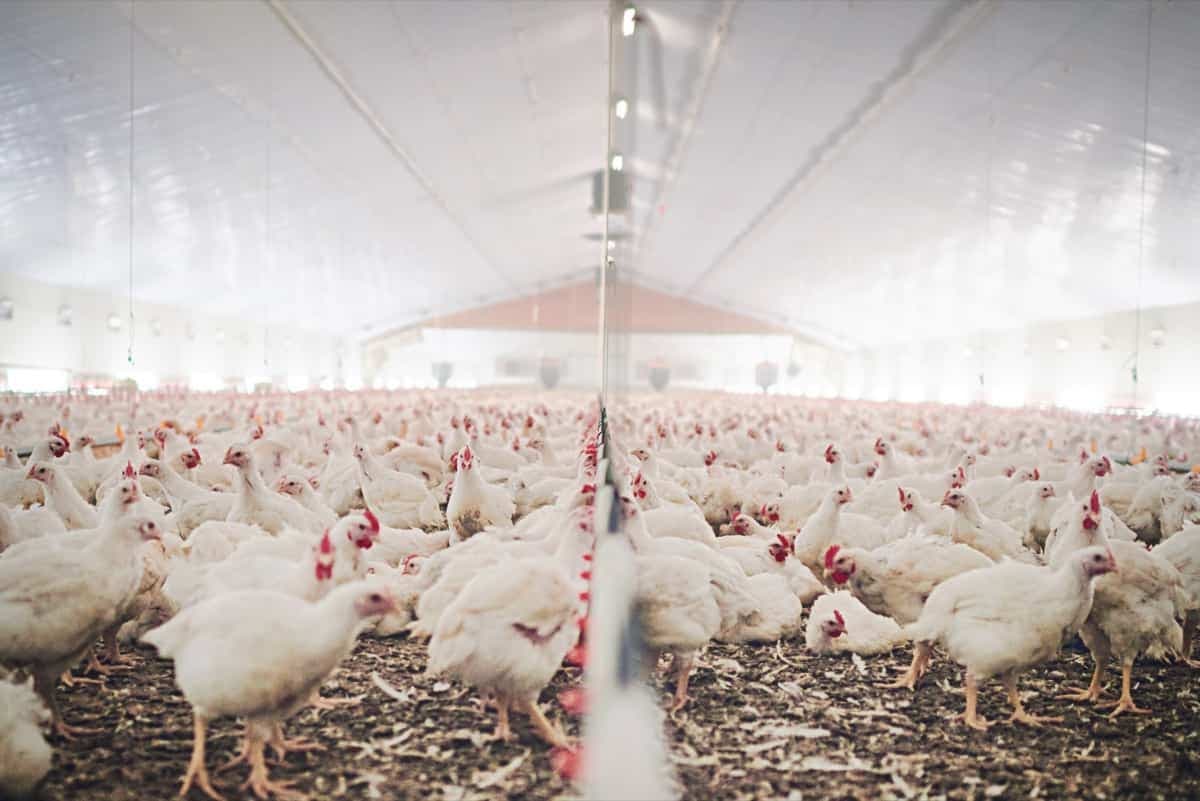
This blog will explore the latest innovations reshaping the poultry farming landscape, from scientific breeding techniques to smart monitoring systems. Join us as we delve into modern poultry farming, where technology meets agriculture for a sustainable and prosperous future.
Innovations in Poultry Farming Focus on Productivity and Health
Poultry farming has become an integral part of livestock farming in India, contributing significantly to the economy. In 2017-18, the Gross Value Addition (GVA) from poultry farming amounted to INR 76,294 crores, as reported by BAHS. The country’s total poultry population reached 851.81 million in 2019, a notable increase of 16.8% annually. This growth demonstrates the growing interest of livestock farmers in poultry farming.
While most poultry farms are in rural areas, 37% of the rural poultry population is reared in backyard farming systems. This poses a challenge for maximizing profits as backyard farming underutilizes resources compared to commercial poultry farming. However, there are tremendous opportunities for poultry farmers, as approximately 95% of the poultry market involves the sale of raw meat.
Exporting processed poultry meat can witness significant growth by exploring processing and diversification. These modern innovations in poultry farming optimize productivity, animal health, and welfare, enabling farmers to meet the growing demand for poultry products while ensuring sustainability. The poultry industry can flourish in a rapidly evolving agricultural landscape by embracing these advancements.
In case you missed it: How to Improve Feed Conversion Ratio (FCR) in Poultry Farming: Key Rules for Beginners
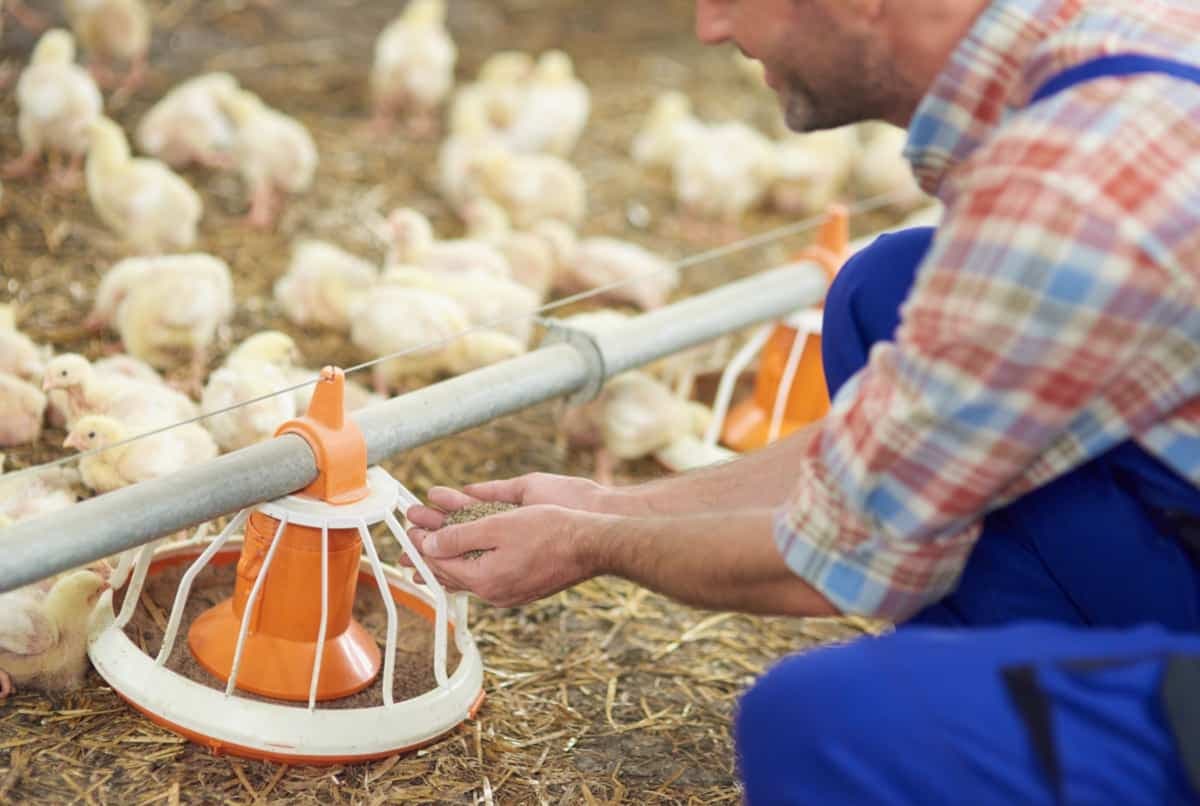
Over time, poultry farming has witnessed remarkable advancements through the continuous efforts of scientists and farmers. These cutting-edge technologies focus on essential components for profitable poultry farming: Breeding, Nutrition, Health, and Housing. Innovations within these components include:
Poultry Breeding Innovations in Poultry Farming
- Quantitative Trait Loci (QTLs) allows the selection of desirable traits by closely analyzing specific genes linked to traits of interest.
- Microarray analysis helps identify genes associated with good traits, enabling breeders to trace them on the DNA level.
- Advanced techniques like transgenesis, RNAi, and CRISPR gene editing facilitate the introduction of new traits and improved gene functionality in poultry strains.
Poultry Nutrition Innovations in Poultry Farming
- A transgenic feed with higher levels of essential proteins and amino acids is developed through genetic modification, providing balanced nutrition to poultry.
- Synbiotics, combining probiotics and prebiotics, serve as alternatives to antibiotics, promoting the growth of beneficial gut microorganisms.
- Biotechnological techniques enable limiting amino acids and trace minerals production through microorganisms like yeast.
Poultry Health Innovations in Poultry Farming
- Emphasis is placed on immediate disease treatment, conducting post-mortems, and studying the reasons behind disease occurrences to implement effective preventive measures.
- Training programs, disease diagnosis infrastructure, and information sharing contribute to disease control strategies.
- Geographic Information System (GIS) aids in designing area-specific disease prevention programs and vaccination schedules.
Poultry Housing Innovations in Poultry Farming
- Modern farms feature automated control systems, automated showers, cooling pads, and efficient feed distribution systems to enhance overall efficiency and hygiene.
- Digital air quality monitors provide real-time readings of ammonia and carbon dioxide levels, ensuring a healthy bird environment.
- Advanced water systems prevent contamination and wastage, promoting water efficiency and preventing waterborne diseases.
- Manure collection and management innovations maintain hygienic conditions, such as using moving belt systems and palletizing dried manure.
- Remote access livestock monitoring systems enable farmers to monitor their poultry sheds in detail through smartphones, tablets, and computers.
The Impact of New Technologies on the Poultry Industry
The poultry industry has witnessed technology’s transformative power, revolutionizing business operations. With the increasing demand for poultry products, technology has play key role in meeting the growing needs. One significant area of improvement is the monitoring and enhancement of the well-being of hens, ultimately leading to improved productivity. Let’s explore how technology has positively impacted the poultry farming landscape.
In case you missed it: Strategies for Maximizing Egg Production in Your Chicken Farm: Tried and Tested Strategies
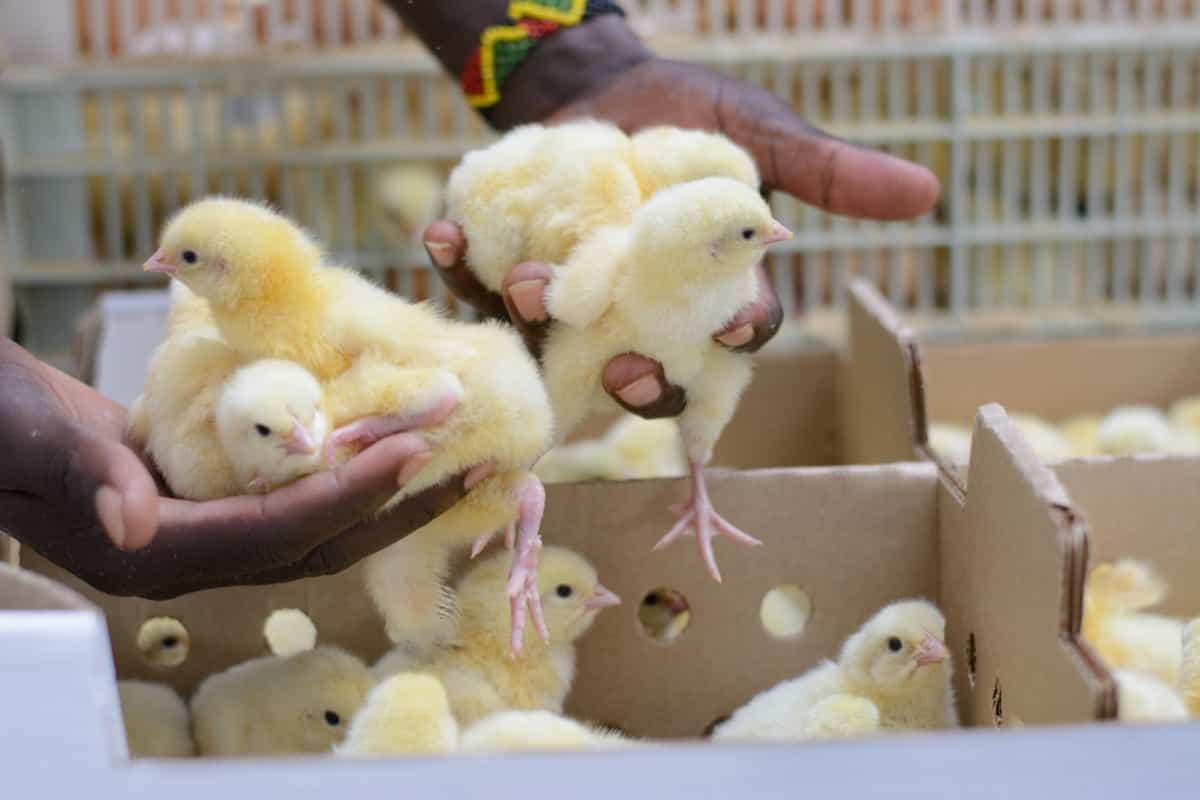
Air quality monitors are now installed in chicken coops to ensure optimal conditions for hens. These smart devices continuously monitor the air quality, detecting harmful gases like ammonia and carbon dioxide that can affect the hens’ ability to lay eggs. Real-time readings provided by these digital monitors enable caretakers to take preventive measures, improving the overall environment and productivity.
To create a favorable environment for hens, fluid LED lights are employed. These lights generate heat, ensuring warmth in the chicken coops and nesting boxes. This artificial warmth is especially beneficial in colder climates and encourages hens to lay eggs. Additionally, the well-lit environment aids in better surveillance and management of the poultry farm. Automation has become increasingly crucial in poultry farming, particularly facing challenges like the COVID-19 pandemic.
Automated chain feeders eliminate the need for manual scattering of feed, allowing hens to access food independently. This reduces human intervention and ensures a continuous and efficient feeding process. Video surveillance technology has also found its place in poultry farming. It reduces the need for constant human supervision and enables farmers to monitor feeding, cleaning, and egg collection remotely.
This technology alleviates the burden on poultry farmers and enhances operational efficiency. Biotechnology has made significant advancements in gene alterations. Introducing a single gene to improve the feathering of hens enhances their ability to withstand cold temperatures. This innovation is particularly valuable in regions with colder climates and helps maintain consistent egg production throughout the year.
As technology advances, the poultry industry benefits from increased productivity, improved animal welfare, and streamlined operations. These innovations showcase the potential for technology to drive sustainable growth and profitability in the ever-evolving world of poultry farming.
Modern Innovations in Poultry Farming: Enhancing Efficiency and Sustainability
These modern innovations in poultry farming improve efficiency, animal welfare, and sustainability, enabling farmers to meet the increasing demand for poultry products while minimizing environmental impact. By embracing these technologies, the poultry industry can continue to evolve and thrive in a rapidly changing agricultural landscape.
In case you missed it: Maximizing Efficiency: How to Optimize Chicken Farm Operations
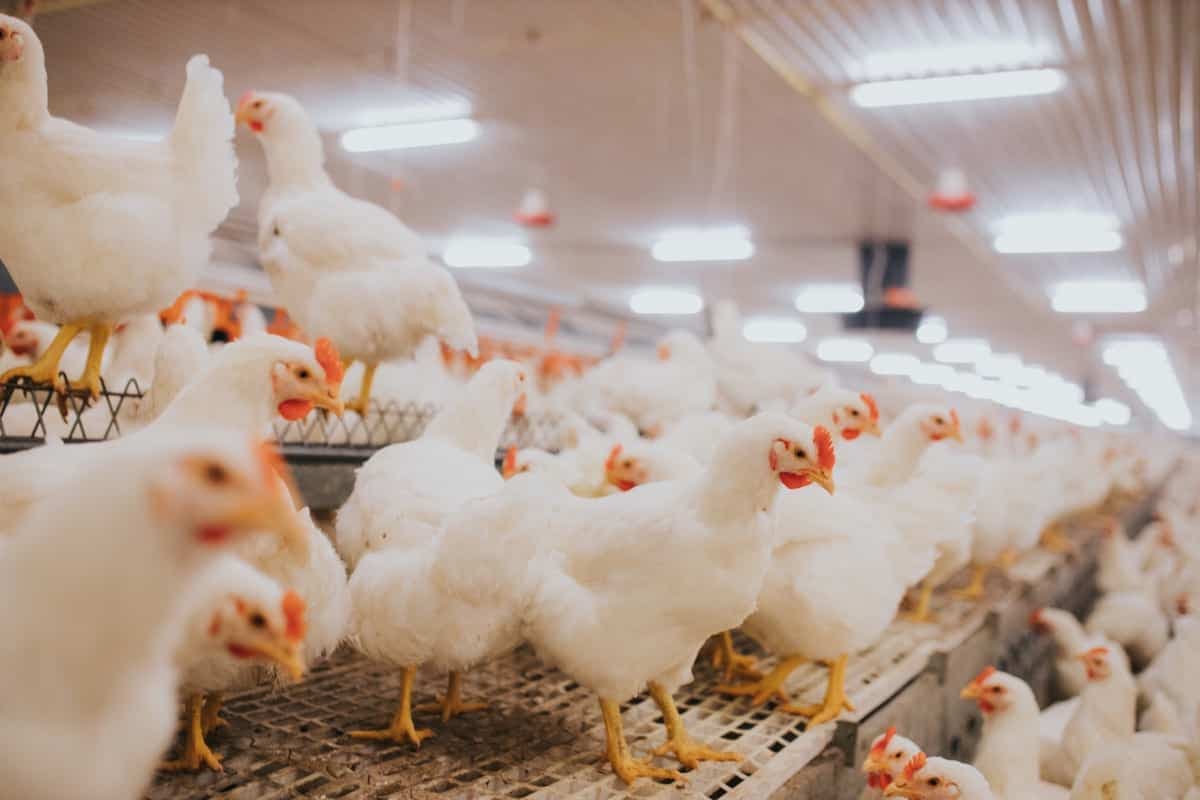
- Smart Sensors and Monitoring Systems: Integrating smart sensors and monitoring systems in poultry farming enables real-time tracking of environmental conditions, ensuring optimal bird Health and productivity.
- Robotic Automation: Automation technologies like robotic systems have revolutionized poultry farming. Robots can perform tasks like feeding, egg collection, and waste management, reducing labor costs and improving efficiency.
- Genetic Selection and Breeding: Advances in genetics and selective breeding techniques have led to the development of superior chicken breeds with desirable traits, such as higher meat yield, disease resistance, and improved feed efficiency.
- Vertical Farming: Vertical farming techniques allow for efficiently utilizing space by growing chickens in vertically stacked layers. This approach is especially valuable in urban areas with limited land availability.
- Biosecurity Measures: Innovations in biosecurity include advanced air filtration systems, disinfection technologies, and disease prediction models, helping prevent the spread of diseases and ensuring the overall health of the flock.
- Artificial Intelligence (AI): AI-powered systems analyze vast amounts of data to optimize farming operations, including predicting disease outbreaks, adjusting feeding regimes, and improving flock management, leading to better farmer outcomes.
- Sustainable Practices: Poultry farming is embracing sustainable practices like renewable energy systems, organic feed usage, water recycling, and responsible waste management, reducing the environmental impact of the industry.
Advancements in Technology for the Poultry Industry
These innovative technologies contribute to better bird health, increased biosecurity, and improved efficiency on broiler and layer farms. By adopting these advancements, poultry farmers can enhance their operations and ensure sustainable and profitable production.
- Sundown Pellebed: Sundown Products offers the most absorbent straw-based poultry bedding on the market. It provides a smooth and stable bird surface, expanding and absorbing moisture as they grow.
- Addfield A50 Bulk Poultry Incinerator: Addfield’s high-capacity incinerator is designed for efficient and biosecure carcass disposal. Made in Great Britain, it offers quick access to key functions and has a touchscreen interface for customization.
- Collinson FeedAlert: Silo specialists Collinson introduced FeedAlert, a digital solution for weighing feed. The load cells can be easily fitted to Collinson silo legs without damaging their structural integrity, providing real-time data for timely reordering.
- Spoutnic NAV: Tibot Technologies developed Spoutnik NAV, a robotic device for broiler producers. It aerates litter, prevents litter capping, and encourages bird movement, improving performance and reducing health issues.
- BASF Storm Ultra Secure: BASF launched a wax-free rodenticide using flocumafen as the active substance. Rats were found to prefer this rodenticide over non-toxic food, making it more effective in controlling rodent populations.
- Inno+ Air Scrubber: Inno+ offers an air scrubber that removes ammonia and dust from poultry shed air. It humidifies the air, passes it through a dust separator, and treats it with water and sulphuric acid to eliminate ammonia.
- Gi-ovo Eggs Cargo System Mini: Gi-Ovo’s plastic pallets, trays, and dividers replace cardboard boxes for delivering small consignments of eggs. A single pallet set-up can hold 2,880 eggs, improving transport efficiency and protection.
- Dofygate Wheel-e-Gate: The portable Wheel-e-Gate system enhances biosecurity by allowing easy installation of barriers to control traffic. Solar-powered and operated by a remote control key fob, it can easily move between sites.
In case you missed it: Raising Kadaknath Chickens (Black Chicken) in India: Check How this Guide Helps Profitable Kadaknath Poultry Farming from Scratch
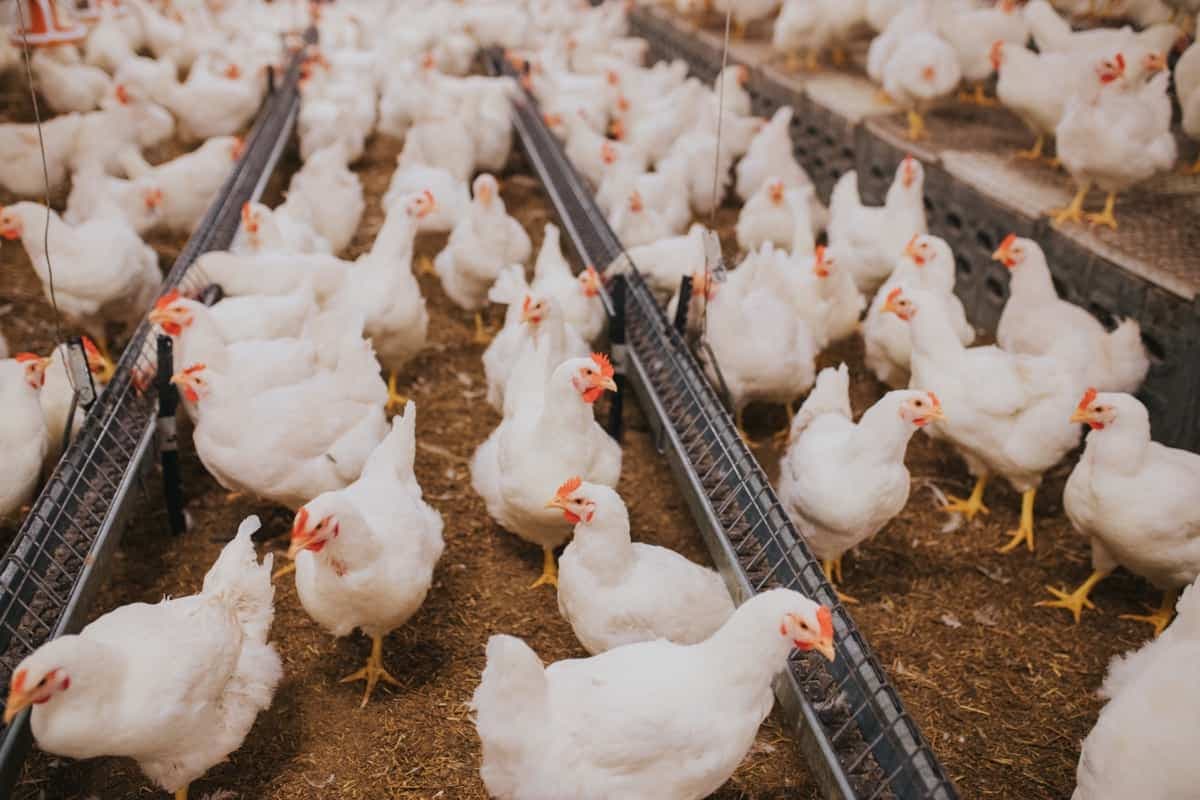
Innovations to Change Poultry Farming and Production
Poultry farming and production innovations are revolutionizing the industry, addressing various challenges and improving efficiency, showcasing a range of groundbreaking solutions. These innovations demonstrate the power of technology to tackle challenges and improve various aspects of poultry farming and production. The industry can achieve higher efficiency, productivity, and food safety standards by embracing these advancements.
Robotics and Automation: Gohbot: This poultry house robot utilizes imaging sensors and machine learning to navigate the floors, detect and collect floor eggs, and monitor environmental conditions. It comes at a cost of under $6,000. ChickenBoy: An autonomous ceiling-suspended robot with AI and sensors, it assesses ambient conditions, bird health, and equipment failures and can potentially remove dead birds and analyze litter moisture.
Food Safety: Technicon Composite-housing Gearboxes: These gearboxes with corrosion-resistant housing and antimicrobial material ensure hygiene in harsh environments, eliminating rust and heat-related issues. Clear Labs Next Generation Sequencing: Using advanced data analytics and bioinformatics tools, this system accurately detects and identifies Salmonella spp. in samples from various sources, reducing inventory holding time and enhancing food safety.
Big Data and Artificial Intelligence: Little Bird Feed Cast System: This device estimates feed levels in on-farm bins, wirelessly reporting data to growers, feed mills, and integrators. It reduces feed outages and waste. PRYSSM: A simulation model for poultry processing plants, it predicts water, energy, wastewater, and labor utilization, aiding decision-making processes. SDSS Multitier Statistical Process Control (SPC): Utilizing machine learning and historical data, it models and predicts outcomes throughout the poultry supply chain, enhancing safety and production.
Life Sciences: Mazen Animal Health Edible Vaccines: These room-temperature stable vaccines are delivered through the feed, protecting coccidiosis. The technology inserts specific antigens into corn plants. TyraTech Phytogenic Blends: These blends are made of safe terpenes found in food plants. They block receptors chemically and mess up the cuticles of parasites, which helps control coccidiosis. Transport Genie: It records micro-climate conditions during poultry transport and alerts stakeholders in real time, improving bird welfare.
Gene Editing Technology: eggXYT CRISPR Gene Editing Technology: By inserting a bio-marker in the DNA of male chicks, this technology enables the diversion of eggs with male embryos to food production, reducing the need for male chick culling.
In case you missed it: How to Start Country Chicken Farming from Scratch in Andhra Pradesh: A Step-By-Step Guide for Beginners
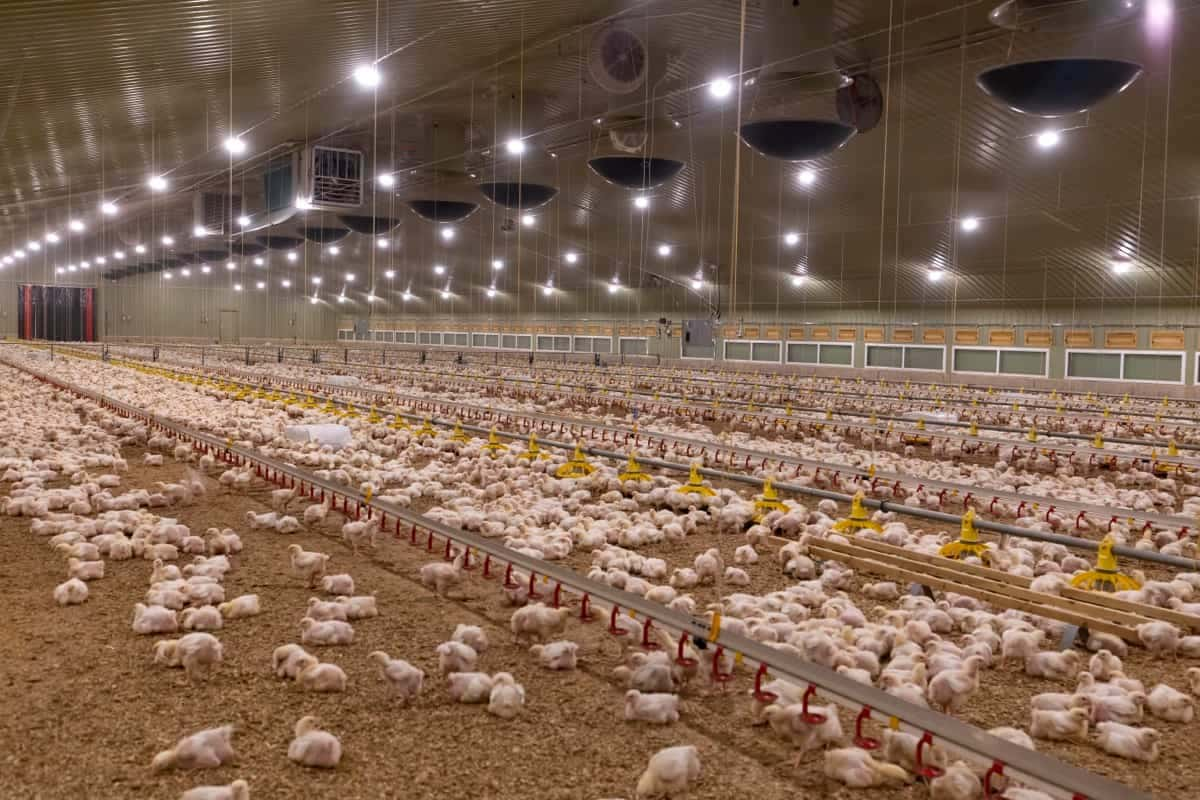
Conclusion
Innovations in poultry farming, driven by technology and Automation, are revolutionizing the industry. From robotics and Automation to food safety measures, big data analytics, and gene editing technology, these advancements improve efficiency, productivity, and animal welfare. By embracing these innovations, the poultry industry can meet growing demands, enhance quality, and ensure a sustainable future for poultry farming and production.
- Types of Pesticides Used in Agriculture: A Beginner’s Guide
- Economical Aquaculture: A Guide to Low-Budget Fish Farming
- 15 Common Planting Errors That Can Doom Your Fruit Trees
- How to Make Houseplants Bushy: Effective Tips and Ideas
- Innovative Strategies for Boosting Coconut Pollination and Yield
- Pollination Strategies for Maximum Pumpkin Yield
- The Complete Guide to Chicken Fattening: Strategies for Maximum Growth
- Natural Solutions for Tulip Problems: 100% Effective Remedies for Leaf and Bulb-Related Issues
- Revolutionizing Citrus Preservation: Towards a Healthier, Greener Future
- Natural Solutions for Peony Leaf and Flower Problems: 100% Effective Remedies
- Maximizing Profits with Avocado Contract Farming in India: A Comprehensive Guide
- Natural Solutions for Hydrangea Problems: 100% Effective Remedies for Leaf and Flowers
- The Ultimate Guide to Choosing the Perfect Foliage Friend: Bringing Life Indoors
- From Sunlight to Sustainability: 15 Ways to Use Solar Technology in Agriculture
- The Ultimate Guide to Dong Tao Chicken: Exploring from History to Raising
- The Eco-Friendly Makeover: How to Convert Your Unused Swimming Pool into a Fish Pond
- Mastering the Art of Delaware Chicken Farming: Essentials for Healthy Backyard Flocks
- 20 Best Homemade Fertilizers for Money Plant: DIY Recipes and Application Methods
- How to Craft a Comprehensive Free-Range Chicken Farming Business Plan
- Brighten Your Flock: Raising Easter Egger Chickens for Beauty and Bounty
- How to Optimize Your Poultry Egg Farm Business Plan with These Strategies
- Subsidy for Spirulina Cultivation: How Indian Government Schemes Encouraging Spirulina Farmers
- Ultimate Guide to Raising Dominique Chickens: Breeding, Feeding, Egg-Production, and Care
- Mastering the Art of Raising Jersey Giant Chickens: Care, Feeding, and More
- Ultimate Guide to Raising Legbar Chickens: Breeding, Farming Practices, Diet, Egg-Production
- How to Raise Welsummer Chickens: A Comprehensive Guide for Beginners
- How to Protect Indoor Plants in Winter: A Comprehensive Guide
- Ultimate Guide to Grow Bag Gardening: Tips, Tricks, and Planting Ideas for Urban Gardeners
- Guide to Lotus Cultivation: How to Propagate, Plant, Grow, Care, Cost, and Profit
- Agriculture Drone Subsidy Scheme: Government Kisan Subsidy, License, and How to Apply Online
- Ultimate Guide to Raising Araucana Chickens: Breed Profile, Farming Economics, Diet, and Care
- Bringing Hydroponics to Classroom: Importance, Benefits of Learning for School Students
- Ultimate Guide to Raising Polish Chickens: Breed Profile, Farming Economics, Diet, and Care
- Ultimate Guide to Raising Australorp Chickens: Profile, Farming Economics, Egg Production, Diet, and Care
- Silkie Chicken Farming: Raising Practices, Varieties, Egg Production, Diet, and Care
- Sussex Chicken Farming: Raising Practices, Varieties, Egg Production, Diet and Care